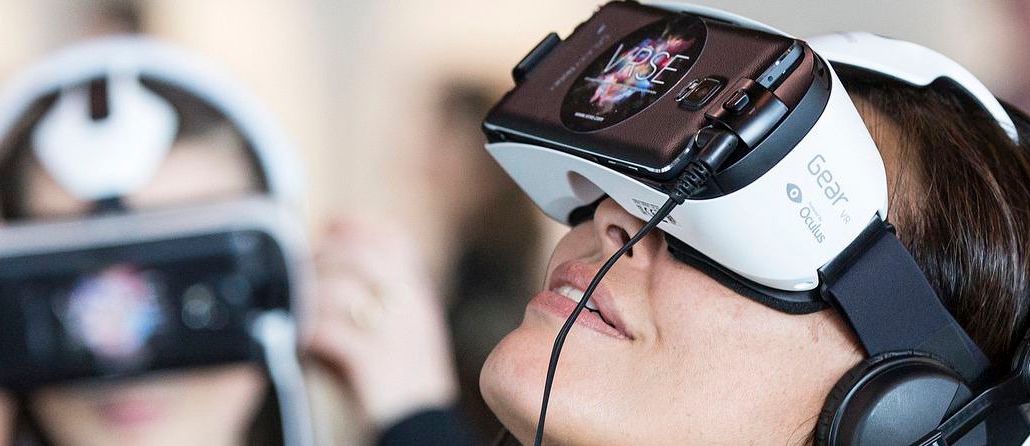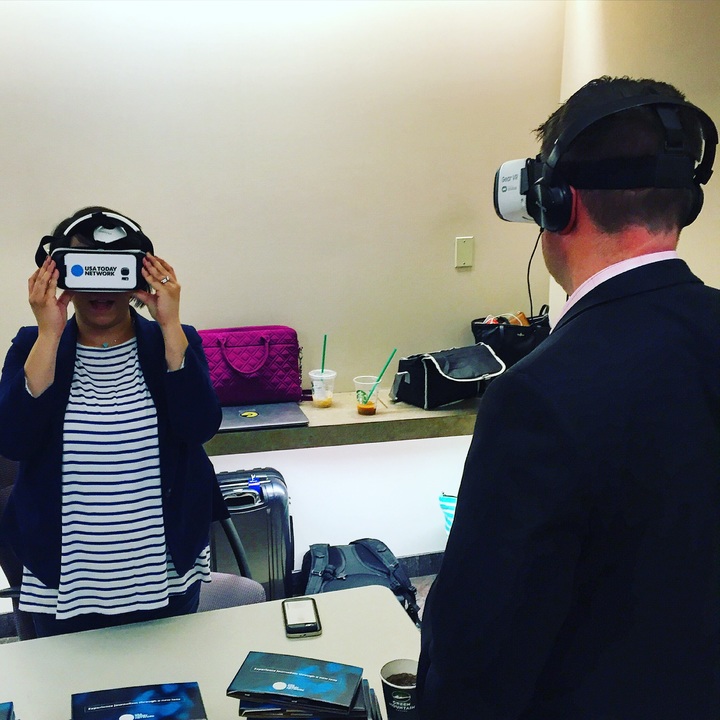Save 50% on a 3-month Digiday+ membership. Ends Dec 5.
Marketers and publishers rush into VR, but grumble about cost and consumer awareness


Virtual reality and close cousin augmented reality are projected to become a $120 billion market in revenue by 2020, according to consulting company Digi-Capital. But they’re still new. At Digiday’s WTF is VR conference in New York City, we asked executives what the biggest challenges for VR are as a consumer medium. Many listed cost, consumer awareness and the complexity.
Kelly Andresen, vp and head of branded content, Gannett
One of the biggest challenges is awareness. When you walk into a coffee shop and ask people there if they know VR, probably 20 percent don’t have a good answer, let alone know how VR works. We should definitely work as an industry to educate people on VR. For example, publishers should at least introduce 360-degree videos to get their readers familiar with VR experiences that are totally different from traditional 2D films. Then they can introduce full VR experiences by developing a mobile app.
For brands and publishers that want to get into VR, cost and time is a big hurdle. It’s hard to find producers who have professional experiences in VR, and it costs hundreds of thousands of dollars to get started. I’ve never heard a piece of VR content that cost less than $150,000.
Dave Meeker, vp of innovation, Isobar
The biggest challenge is having consumers adopt the VR hardware without the content being there first, while agencies and brands are afraid to produce the content until enough consumers have adopted the hardware. It’s a chicken-and-egg situation.
From a creative perspective, it’s expensive, complicated and risky to produce professional VR experiences. You need frame rates that are high enough, but you should be aware not to cause viewers headache. Cost is a challenge as well. Shooting a 360-degree video is very affordable, but a computer-generated VR activation that is combined with gaming elements needs serious investment. Because it involves the complexity of both making video games and shooting films.
Agencies have lots of good ideas, but it could cost lots of time and millions of dollars to execute those ideas. So should I create good stuff knowing that not everyone is able to use it? If I’m the CFO of a company, the answer is no. If I’m the chief experience officer of a company, the answer is yes.
Ad position: web_incontent_pos1
Julian Reyes, lead VR producer, Fusion
Consumer awareness is less of a concern in my opinion because big tech companies like Facebook, Google and Microsoft are all pushing VR. VR is a scattered market. So many organizations are jumping into it because everyone is doing it. To create really compelling VR content, you need to figure out what VR experience you want to deliver and how you are going to deliver it because there are six different types of headsets in the market.
Todd Krieger, director of emerging technology, Deep Focus
The biggest challenge for VR as a consumer medium is getting people to try it with a headset. Of course, there are some VR-light experiences that people can easily have on desktop and mobile, like 360-degree videos, which can be created with an array of GoPro Hero cameras.
More in Marketing

Ulta, Best Buy and Adidas dominate AI holiday shopping mentions
The brands that are seeing the biggest boost from this shift in consumer behavior are some of the biggest retailers.

U.K. retailer Boots leads brand efforts to invest in ad creative’s data layer
For media dollars to make an impact, brands need ad creative that actually hits. More CMOs are investing in pre- and post-flight measurement.

‘AI is permeating everything we do’: How Guitar Center developed 2 AI tools this year
This summer, the company launched a chatbot called Rig Advisor to help customers find the right instruments and products.
Ad position: web_bfu
